
The three main architectural styles used for temples and other formal public buildings in ancient Greece were the Doric, Ionic and Corinthian classical orders.
The three orders were first described by Roman architect and engineer Vitruvius, known for his multi-volume work titled de Architectura, within which he lists the three principles that a structure must exhibit: stability, utility and beauty.
The names of the three ancient Greek classical orders reflect their regional origins, and each order is most easily recognized by its capital (the topmost portion of a column, mediating between the column and the load it holds up).
However, each order also governs the form, proportions, details and relationships of the columns, entablature, pediment, and the stylobate.
The Doric Order was developed on mainland Greece and made its way to Magna Graecia (Italy), having been well established and defined in its characteristics by the time the Temple of Hera at Olympia was built, around 600 BC.

Co-existing with the Doric order, the Ionic order was favored by the Greek cities in Ionia, in Asia Minor (Anatolia) and the Aegean Island. However this style did not reach its clearly defined form until the mid 5th century BC. The earliest Ionic style temples of Asia Minor are known to be very ambitious in scale, a good example being the Temple of Artemis at Ephesus, believed to be the largest temple in ancient Greece.
The Corinthian order encompassed a much more decorative style, which was not properly developed until the Hellenistic period, and even then retained many characteristics of the Ionic. It was popularised by the Romans.
Ancient Greek Temples of the Doric Style
Temples of the Doric order are recognisable by their capital, which presents as a circular cushion rising from the top of the column to the square slab (abacus), which supports the structure’s horizontal beams (lintels).
Doric columns are typically cut with linear upward grooves, known as ‘fluting’, which run along the length of the columns and are generally 20 in number. Columns on Doric temples are the shortest and widest of all three orders, with the height to base diameter ratio being just 4:1. At the top of the columns, just beneath the narrowest section, are three horizontal grooves known as the hypotrachelion.
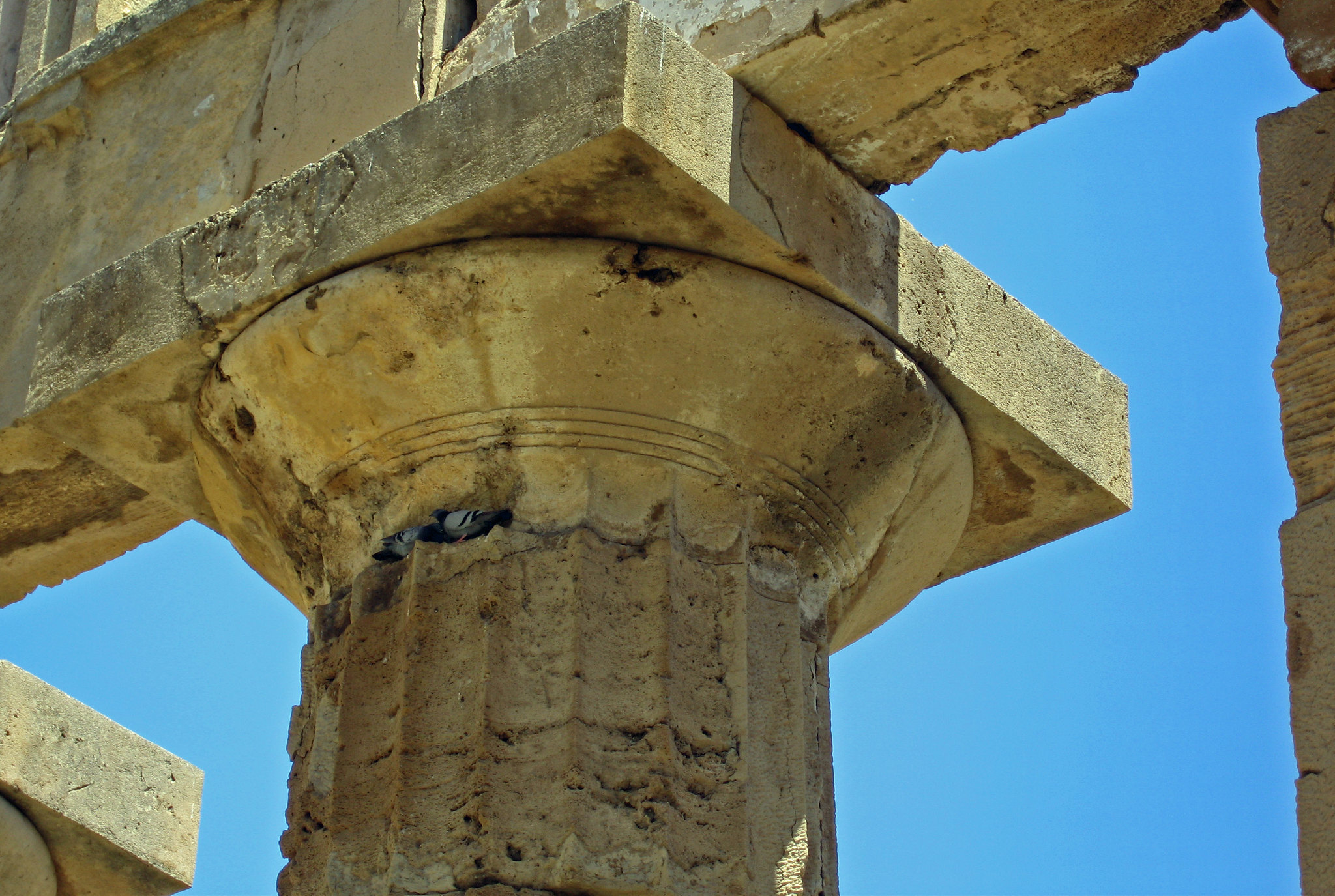
Doric temple columns typically had no bases and instead rested directly on the stylobate (continuous base supporting row of columns), until a few examples appeared in the Hellenistic period that differed from this.
The Frieze section of the Doric entablature (horizontal bands supported by and located above the columns), is particularly distinctive. It comprises of projecting triglyphs (units of three vertical bands separated by grooves) that alternate with receding square panels, called metopes, that usually present with sculptured reliefs but can also be left plain.
The Roman temples of the Doric order have smaller proportions and look lighter than their Greek counterparts.
The Ionic Order
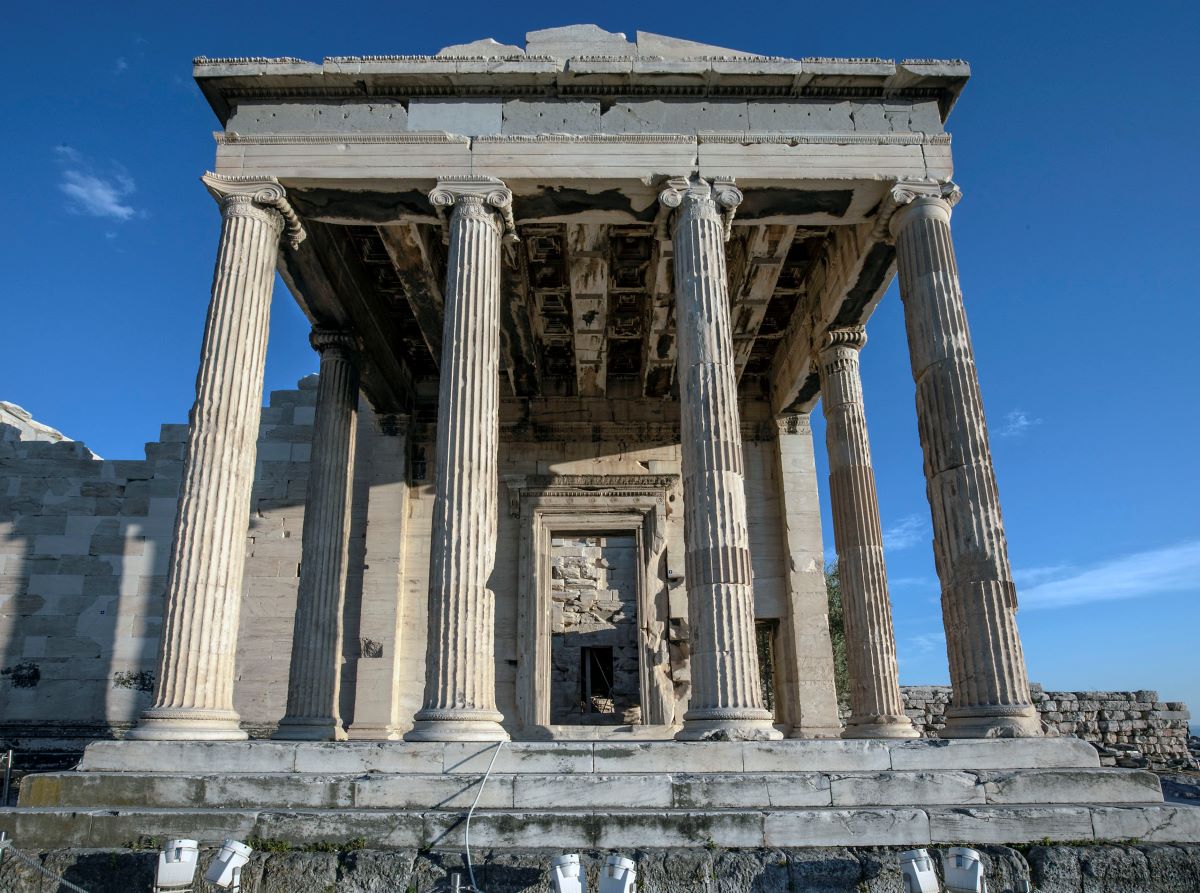
The Ionic style temples of ancient Greece differ from the Doric order in that they have more flutes on the columns, and in the scrolls that hang over the front and back sections of the capital. The portion of the upper column that rests directly below the abacus (echinus) is carved with an egg-and-dart motif on Ionic temples.
The height of the entire Ionic order-column, base, capital and entablature, is nine times the diameter of the base of the column.
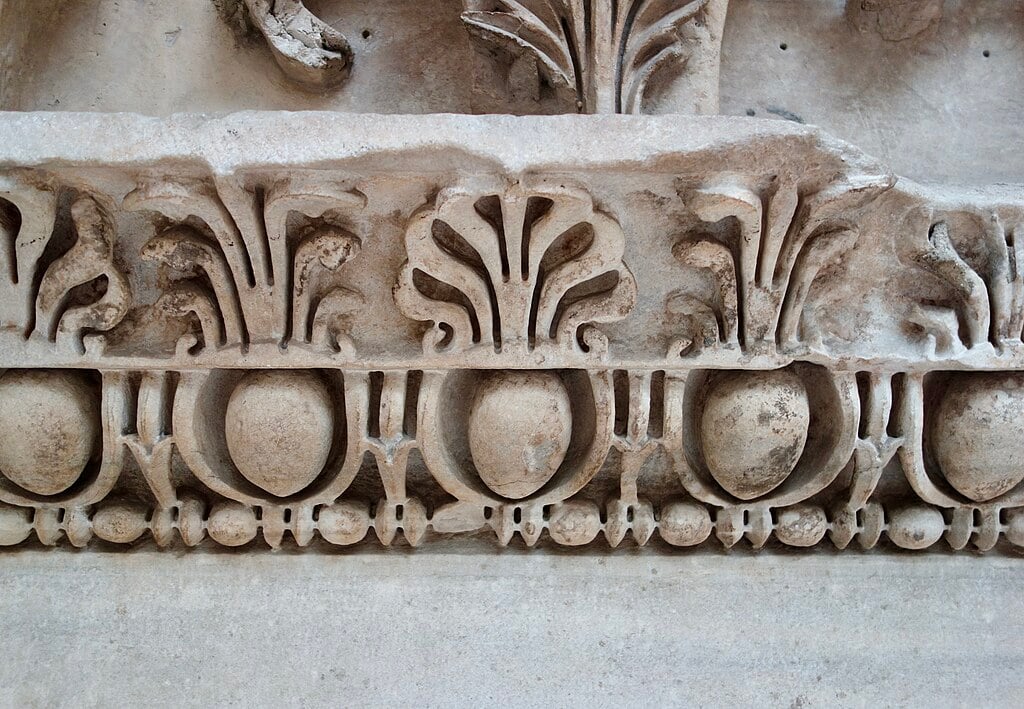
The column shafts – eight times in height that of the diameter of the column base – had 24 flutes, while the frieze on the entablature lacks the Doric triglyph and metope, instead presenting a continuous band of carved ornament, such as figural groups.

The Ionic order is an altogether lighter spectacle than the Doric, with a much narrower, and less heavy entablature. Caryatids – draped female figures – were a prominent feature of the Ionic order, and were used to carry the entablature. This occurs at several temples including the Siphnian Treasury at Delphi and at the Erechtheion.
The Corinthian Style Came Later to Ancient Greece
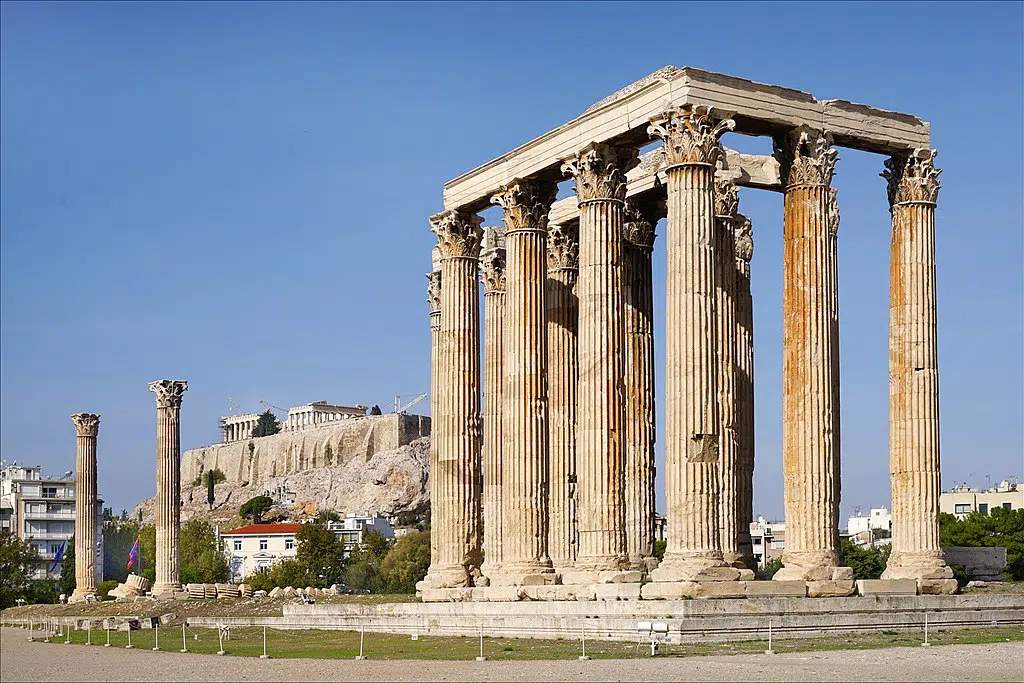
The Corinthian order is known to be the most elegant of the three orders, the distinguishing characteristics of these temples being their striking capitals. These column toppers would typically be carved with two staggered rows of stylized acanthus leaves and four scrolls. The column shafts had 24 sharp-edged flutes, while the column stood at 10 times diameter high.
This order grew directly out of the Ionic in the mid 5th century BC, and originally held much of the same style and proportions, and was distinguishable only by its far more elaborate and ornate capitals.
The capitals were a lot deeper than either the Doric or Ionic orders, shaped like a large krater, a bell-shaped mixing bowl, and being ornamented with rose voluted tendrils beneath a no-longer square abacus.
According to Vitruvius, the capital of the Corinthian style was invented by a bronze founder, Callimachus of Corinth, who was supposedly inspired by a basket of offerings that had been put on a grave, with a flat tile on top to protect the goods. The basket had been placed on the root of an acanthus plant which had grown up around it.
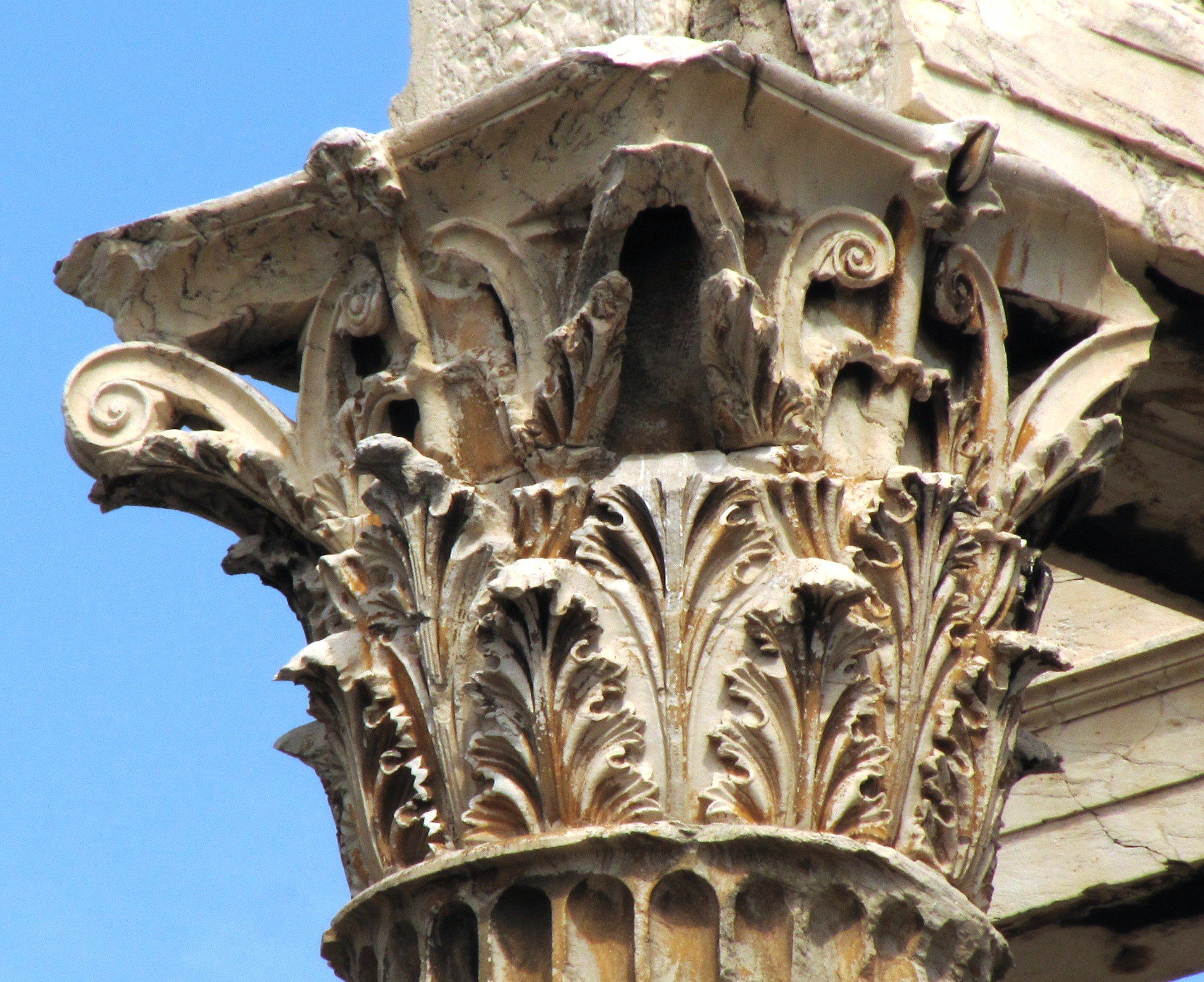
The ratio of the Corinthian column height to its diameter is typically 10:1, with the capital taking up more than one tenth of the overall height.
The Corinthian order was originally used inside structures, as seen at the Temple of Apollo Epicurius at Bassae. In 334 BC, it appeared as an external feature on the Choragic Monument of Lysicrates in Athens, and then on a much larger scale at the Temple of Zeus Olympia, also in Athens.
The style was popularised by the Romans, who added their own refinements and ornamental details. During the hellenistic period, Corinthian columns were ocassionally built without any fluting.
See all the latest news from Greece and the world at Greekreporter.com. Contact our newsroom to report an update or send your story, photos and videos. Follow GR on Google News and subscribe here to our daily email!



